Online Telescope
 Bashny.Net
Bashny.Net
Hello, can anyone is interested, I'm very fond of astronomy, but with his telescope is not always possible to travel to the observation, I found on the Internet service where you can look through the telescope via Webcam.
For those who have never watched the telescope, this activity may seem very simple: a pipe and brought voila, everything is clear, both from the Hubble Space Telescope images. In practice, however, all so far. Everything you see in the telescope will be gray (except for the planets and the moon), a small and difficult to distinguish. In order to somehow improve the picture, astronomers are buying large telescopes, go far beyond the city, buy specials. filters, etc.
Those who do not want to spend a lot of money (observational astronomy is very expensive), there are online services, where you can look through the telescope via the internet.
Here's what you can see in just a few hours of viewing.
Will 6 photos.
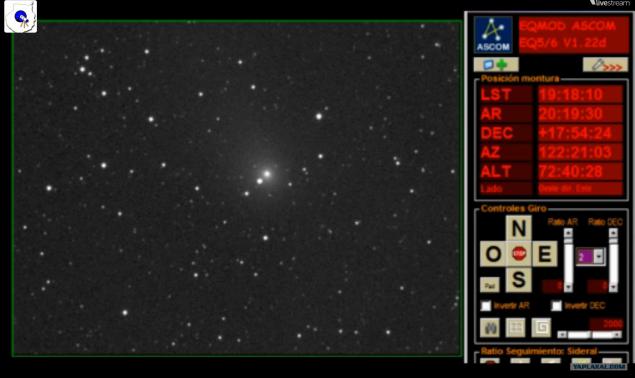
Ring Nebula or M57
Planetary Nebula M 57 in the constellation Lyra. This is one of the most famous and recognizable examples of planetary nebulae. It looks slightly elongated rings lying around the central star. The radius of the nebula is about a third of a light year.
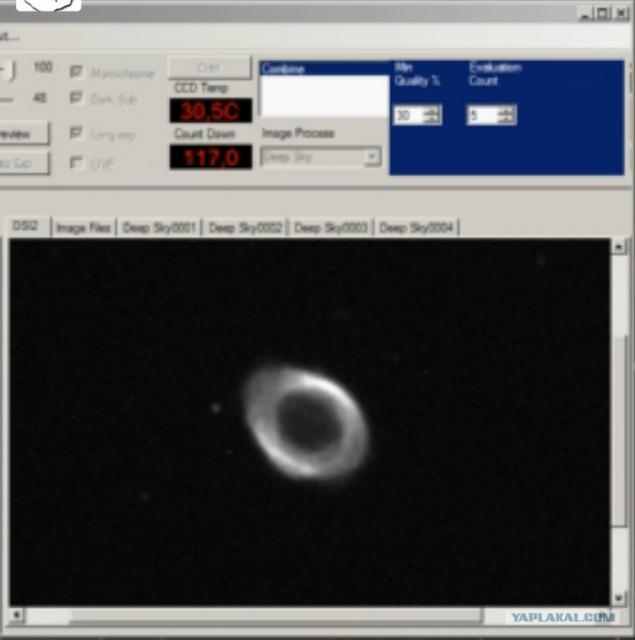
Our, beloved, satellite Moon
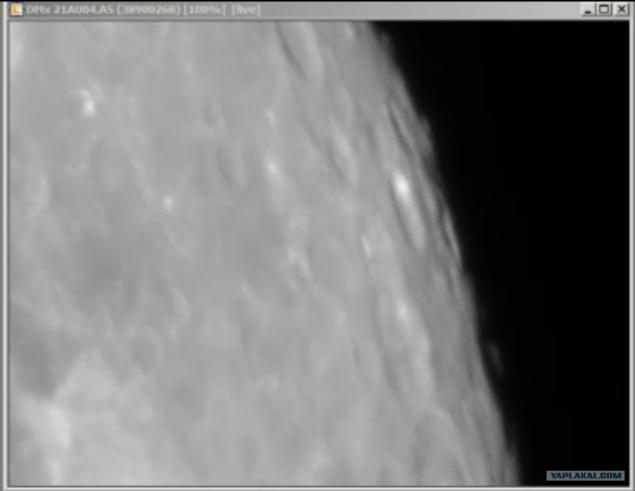
The largest planet in the solar system - Jupiter
Jupiter - the fifth planet from the Sun, the largest in the solar system, is classified as a gas giant.
A number of atmospheric phenomena on Jupiter - such as storms, lightning, aurora - have a scale orders of magnitude superior to earth. Jupiter has at least 67 moons, the largest of which - Io, Europa, Ganymede and Callisto - were discovered by Galileo Galilei in 1610.
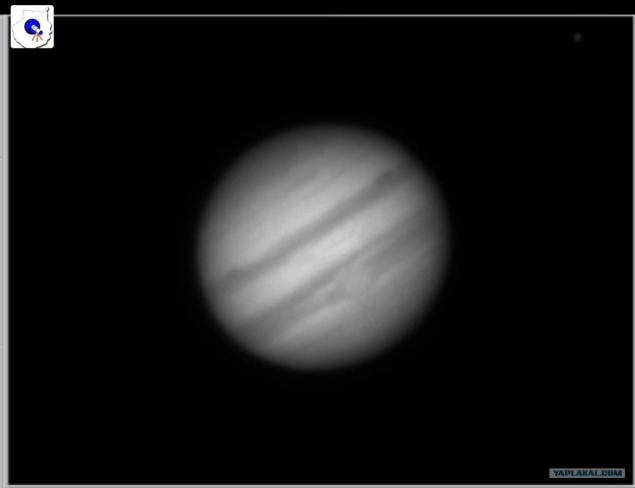
Dumbbell Nebula or M27 - a planetary nebula in the constellation Vulpecula, at a distance of 1250 is light years from Earth. Age Dumbbell Nebula is estimated between 3,000 and 4,000 years.
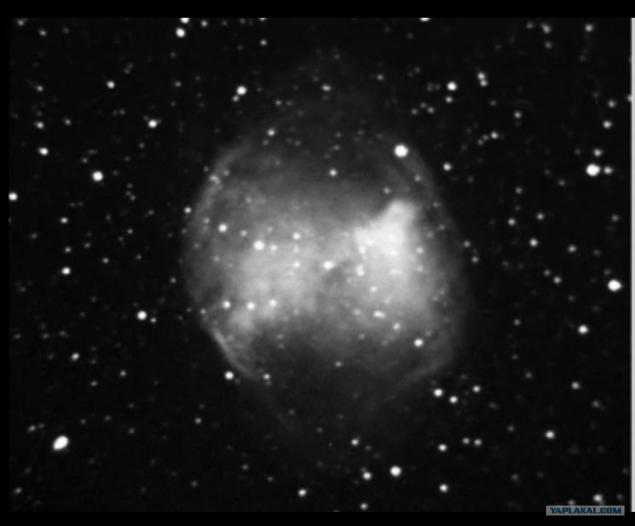
Comet
Presumably, the long-period comets fly to us from the Oort Cloud, which is a huge number of cometary nuclei. The bodies that are on the fringes of the solar system, as a rule, consist of volatile substances (water, methane and other ices), evaporating at approaching the sun. Thanks to these vapors formed the famous comet tail

You can also conveniently get to any astronomical event, for example, I found the recent passage of the asteroid 2013 LR6.
This picture shows the asteroid in 2013 LR6, which flew on June 7 a distance of about 108,000 km from the Earth. Due to the fact that the size of the asteroid is very small, of the order of 5-16 meters, it is visible as tiny points among lubricated track stars.
Often, when there are no decent facilities for observation, weather or not, you will see a splash screen with the results of last observations or following the announcement.
All broadcasts I watched most of the evening, the website spacegid.com/otsutstvie-teleskopa-ne-problema.html
Posted in [mergetime] 1371404767 [/ mergetime]
All ... You can kick
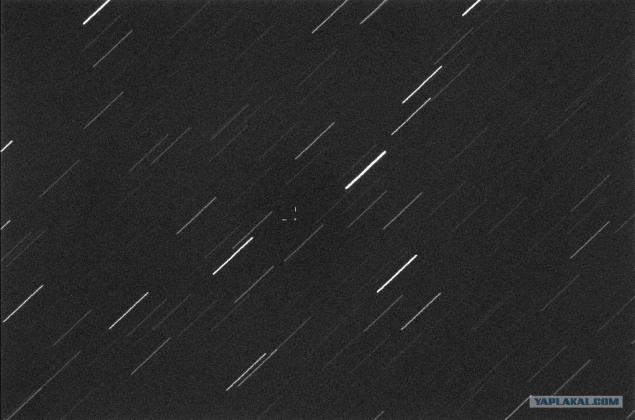
Source:
For those who have never watched the telescope, this activity may seem very simple: a pipe and brought voila, everything is clear, both from the Hubble Space Telescope images. In practice, however, all so far. Everything you see in the telescope will be gray (except for the planets and the moon), a small and difficult to distinguish. In order to somehow improve the picture, astronomers are buying large telescopes, go far beyond the city, buy specials. filters, etc.
Those who do not want to spend a lot of money (observational astronomy is very expensive), there are online services, where you can look through the telescope via the internet.
Here's what you can see in just a few hours of viewing.
Will 6 photos.

Ring Nebula or M57
Planetary Nebula M 57 in the constellation Lyra. This is one of the most famous and recognizable examples of planetary nebulae. It looks slightly elongated rings lying around the central star. The radius of the nebula is about a third of a light year.

Our, beloved, satellite Moon

The largest planet in the solar system - Jupiter
Jupiter - the fifth planet from the Sun, the largest in the solar system, is classified as a gas giant.
A number of atmospheric phenomena on Jupiter - such as storms, lightning, aurora - have a scale orders of magnitude superior to earth. Jupiter has at least 67 moons, the largest of which - Io, Europa, Ganymede and Callisto - were discovered by Galileo Galilei in 1610.

Dumbbell Nebula or M27 - a planetary nebula in the constellation Vulpecula, at a distance of 1250 is light years from Earth. Age Dumbbell Nebula is estimated between 3,000 and 4,000 years.

Comet
Presumably, the long-period comets fly to us from the Oort Cloud, which is a huge number of cometary nuclei. The bodies that are on the fringes of the solar system, as a rule, consist of volatile substances (water, methane and other ices), evaporating at approaching the sun. Thanks to these vapors formed the famous comet tail

You can also conveniently get to any astronomical event, for example, I found the recent passage of the asteroid 2013 LR6.
This picture shows the asteroid in 2013 LR6, which flew on June 7 a distance of about 108,000 km from the Earth. Due to the fact that the size of the asteroid is very small, of the order of 5-16 meters, it is visible as tiny points among lubricated track stars.
Often, when there are no decent facilities for observation, weather or not, you will see a splash screen with the results of last observations or following the announcement.
All broadcasts I watched most of the evening, the website spacegid.com/otsutstvie-teleskopa-ne-problema.html
Posted in [mergetime] 1371404767 [/ mergetime]
All ... You can kick

Source:
Tags
See also
People seem to think that we simply do not ...
Otfotoshopte me please (70 photos)
Free games in casino Volcano
Monument of a bygone era
Top secret
Christmas decorations of the disks 3
Mouse and cheese
Expertise Home

















